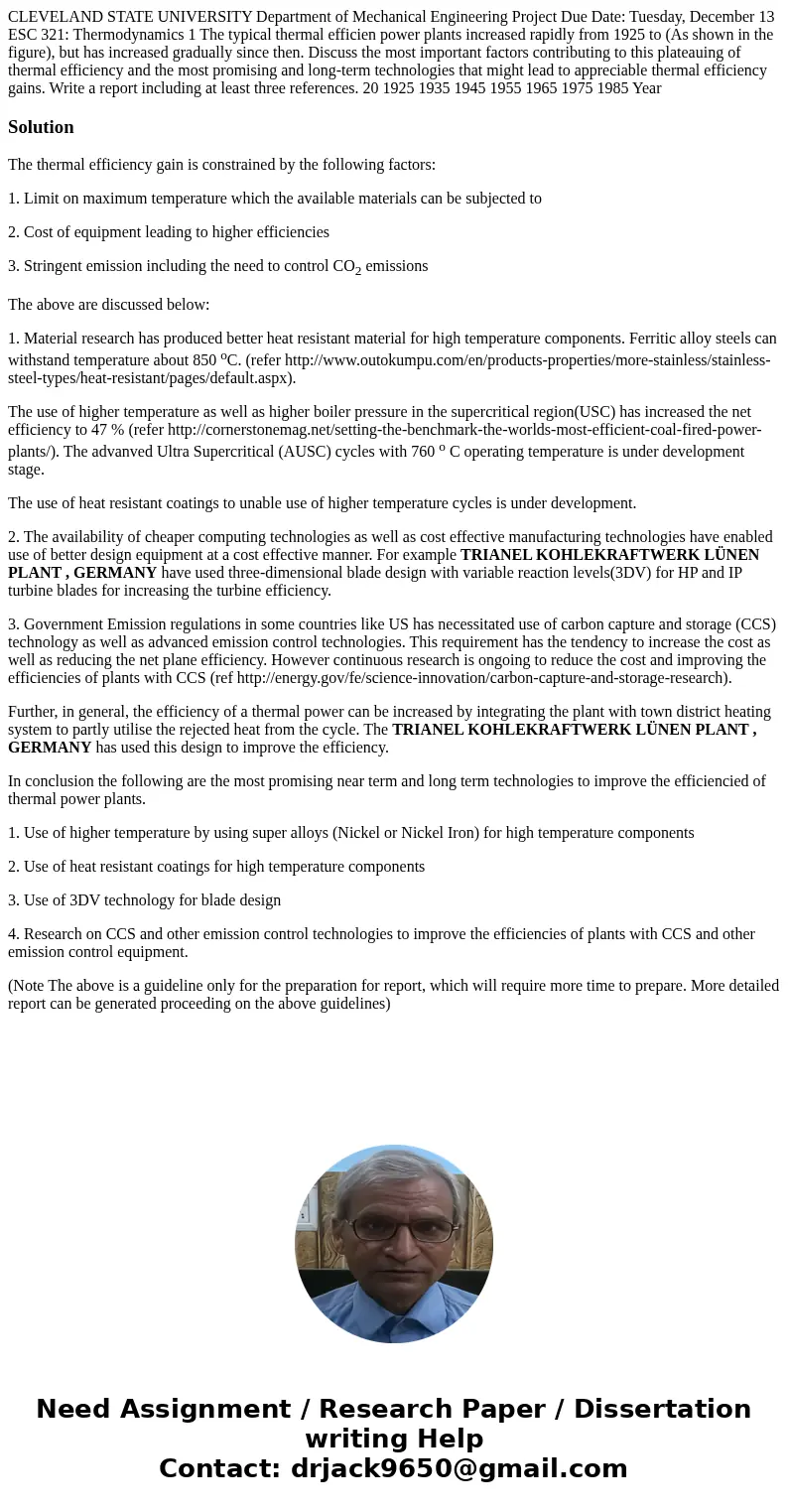CLEVELAND STATE UNIVERSITY Department of Mechanical Engineer
Solution
The thermal efficiency gain is constrained by the following factors:
1. Limit on maximum temperature which the available materials can be subjected to
2. Cost of equipment leading to higher efficiencies
3. Stringent emission including the need to control CO2 emissions
The above are discussed below:
1. Material research has produced better heat resistant material for high temperature components. Ferritic alloy steels can withstand temperature about 850 oC. (refer http://www.outokumpu.com/en/products-properties/more-stainless/stainless-steel-types/heat-resistant/pages/default.aspx).
The use of higher temperature as well as higher boiler pressure in the supercritical region(USC) has increased the net efficiency to 47 % (refer http://cornerstonemag.net/setting-the-benchmark-the-worlds-most-efficient-coal-fired-power-plants/). The advanved Ultra Supercritical (AUSC) cycles with 760 o C operating temperature is under development stage.
The use of heat resistant coatings to unable use of higher temperature cycles is under development.
2. The availability of cheaper computing technologies as well as cost effective manufacturing technologies have enabled use of better design equipment at a cost effective manner. For example TRIANEL KOHLEKRAFTWERK LÜNEN PLANT , GERMANY have used three-dimensional blade design with variable reaction levels(3DV) for HP and IP turbine blades for increasing the turbine efficiency.
3. Government Emission regulations in some countries like US has necessitated use of carbon capture and storage (CCS) technology as well as advanced emission control technologies. This requirement has the tendency to increase the cost as well as reducing the net plane efficiency. However continuous research is ongoing to reduce the cost and improving the efficiencies of plants with CCS (ref http://energy.gov/fe/science-innovation/carbon-capture-and-storage-research).
Further, in general, the efficiency of a thermal power can be increased by integrating the plant with town district heating system to partly utilise the rejected heat from the cycle. The TRIANEL KOHLEKRAFTWERK LÜNEN PLANT , GERMANY has used this design to improve the efficiency.
In conclusion the following are the most promising near term and long term technologies to improve the efficiencied of thermal power plants.
1. Use of higher temperature by using super alloys (Nickel or Nickel Iron) for high temperature components
2. Use of heat resistant coatings for high temperature components
3. Use of 3DV technology for blade design
4. Research on CCS and other emission control technologies to improve the efficiencies of plants with CCS and other emission control equipment.
(Note The above is a guideline only for the preparation for report, which will require more time to prepare. More detailed report can be generated proceeding on the above guidelines)

 Homework Sourse
Homework Sourse